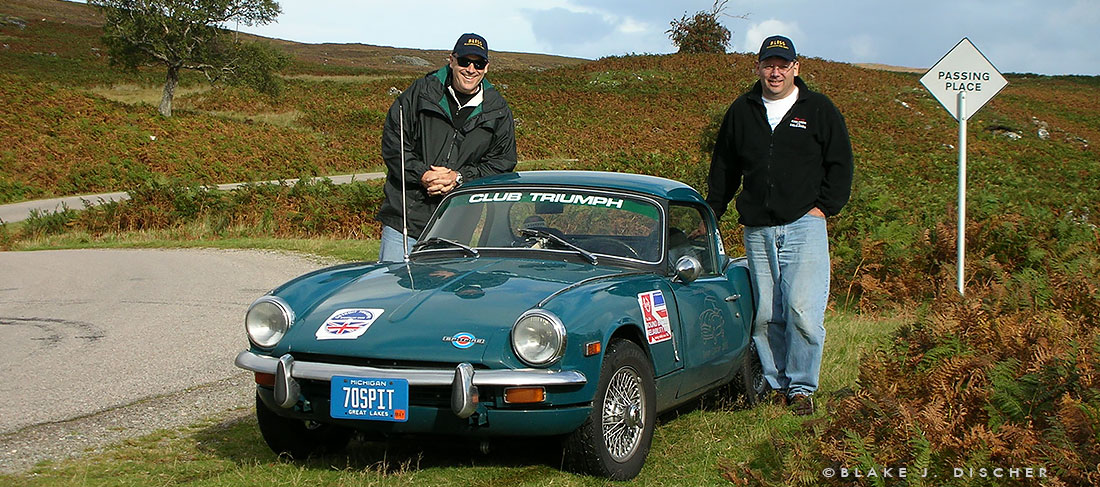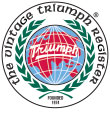
VTR Rallyes – General Guidelines
Last revised July, 1997
I. Type of events
There shall be two types of rallyes offered at the VTR convention: a gimmick or fun rallye and a Time-Speed-Distance (TSD) event. The gimmick rallye may take on many forms; the TSD event should be a non-trapped timed rallye. It is possible for someone without significant rallye experience to put together an acceptable gimmick rallye using these guidelines and the official VTR general instructions. It is required by VTR that only experienced personnel write and work the TSD rallye. If the host club has no such people, it should look to other local clubs with such experience to put on the event. An experienced club should be able to use these guidelines and official VTR general instructions to put on a TSD event.
II. General Instructions and Supplemental Instructions
The official VTR general instructions (GIs) for gimmick rallyes and TSD rallyes shall apply to each event. In addition, there shall be supplemental instructions (SIs) for each event which may supersede the GIs. Supplementals should be kept brief and not rewrite the GIs. At a minimum, SIs should contain the following information:
For Gimmick Rallyes:
- start location and time,
- scoring information,
- mileage measurement (including conditions and type of vehicle) if applicable,
- time limit,
- any changes to the GIs,
- other pertinent information,
- Official Rallye Glossary.
For TSD rallyes:
- start location and time,
- scoring information,
- timing information (minutes and hundredths or minutes and seconds),
- official mileage measurement information (type of vehicle, odometer, tire size and pressure, conditions, driven or undriven wheel, calibration standard),
- rallye format,
- other pertinent information,
- Official Rallye Glossary.
The official VTR Glossary of Terms and Abbreviations lists the acceptable terms and abbreviations to be used on either type of event. The rallyemaster should edit the list to include only those terms actually used in the route instructions and provide that edited list as part of the SIs, to avoid any possible confusion on the part of the contestants.
III. Gimmick Rallyes
A. General. The gimmick rallye should be a fun, low pressure event of about 50 miles including the odometer correction leg if needed. In no case should the event exceed 60 miles or 2.5 hours.
B. Pre-check. Have two people run the rallye route, with the rallyemaster in the back seat. The rallyemaster should let the test crew run the event and not interfere unless something goes drastically awry. At least one pre-check is necessary; additional pre-checks are desirable. Do a check after each major rewrite.
C. Types of gimmick rallyes
1. Question and Answer. This is one of the simplest events to put on. Worded instructions (using the glossary and the GIs) are used to indicate the course and questions are asked about things on (or off) the route. In this event the route should be easy and the questions can be tricky. It is common to use riddles or word puzzles. A good guide is to have at least half as many questions as miles; for example a 50 mile Q&A rallye should have at least 25 questions. Mileage or time may be used as a tie-breaker. A part of the rallye may look like this: 15. Turn left at the Golden Arches. 16. Right. Q 8. How may cardinals are there? 17. Left after the red barn. 18. Bear right at Y. Q 9. How much is soda today? Get the idea? Your imagination is the limit on the questions, but avoid anything that may not be common knowledge. Don’t ask for the gas price that approaches the natural log of the half life of U235 for example. A scavenger hunt is fun for this type of event as well.
2. Poker Rallye. A variation on the Q&A rallye is the poker rallye. This rallye requires checkpoint workers along the route. It is possible to get local merchants to cooperate with this scheme as well. The route instructions take contestants along the route where they pick up playing cards at checkpoints or at local businesses (sponsors of the convention?). There should be 5 cards total. They can get one at the start, one at the finish and 3 along the way, or any way as long as they have a hand of 5 cards at the end. The winning poker hand wins the event.
3. The Hare and Hound. Another worded instruction format that incorporates “decision points” or in rallye lingo ODOTS (optional direction of travel). Worded instructions are used and at an intersection where more than one direction of travel on legal rallye roads is possible, ODOT is used. The contestants have to guess which way to go. The right course is confirmed by a marker within 1/2 mile of the intersection. The marker could be a sign indicated in the routes, or a special sign put up by the rallyemaster (in many cases little hares). In its purest form a lead car runs about 30 minutes ahead of the rallye and throws down lime bags to mark its path. Scoring is on questions and mileage.
4. Map Rallye. This can also take many forms. One of the most fun is to have checkpoint locations marked on a map and the contestants take the shortest route between them as determined by the map. This can also be easily made into a scavenger hunt. Questions can be used about things seen on the shortest route and on longer incorrect routes.
D. Mileage and Odometer Checks. If mileage is to be used as part of the scoring process, it is necessary to provide a way to compare the rallye vehicle odometer to the one used to measure the event. This is done with an odo check. Pick relatively straight roads and easy course following. Measure the mileage with the official vehicle. Give the contestants many official mileage along the odo check and the final odo check mileage at the end. They can then figure the difference between their odo and the one used to measure the rallye route (odo factor). The odo factor is equal to official mileage/contestant’s mileage. When this factor is multiplied by the mileage shown on the contestant’s odo at any point in the rallye, it will convert that mileage to official miles. This system even works with cars with kilometers instead of miles (they just have a big factor). The odo check should be 10% of the total rallye or 8 miles whichever is greater.
It is standard to estimate official mileage to 0.01 miles. Either the contestant or the scoring committee must convert the contestant’s mileage to official miles. You can ask the contestant to do this in the route instructions, or have the contestant fill in his odo check mileage on the score card and have the scoring committee do the multiplication.
E. Scoring. If mileage is used, 1 point for each 0.01 miles over or under official mileage is standard. Each contestant’s score should be determined by multiplying the contestant’s mileage by the odo factor. Under no circumstances use the contestants uncorrected mileage for scoring (they are using Smith’s instruments, remember?) 25 points for each incorrect question. Lowest score wins. Any scoring scheme may be applied if it is consistent.
F. Instruction Security. If the gimmick rallye is made available to contestants throughout the convention, be sure to collect the route instructions.
G. Panic Packs. Provide a course map with the name of the convention hotel and a phone number in a sealed envelope with the car number printed on it. This panic pack must be turned in unopened or the contestant is disqualified; however it will help ensure that no one gets hopelessly lost.
IV. Rallye Advisor Review
It is recommended that early drafts of both rallyes be forwarded to the VTR Rallye Advisor (or a designated substitute) for input as they are developed. At a minimum, the final draft should be forwarded to the Rallye Advisor at least three weeks in advance of the event. If the Rally Advisor is planning on attending the convention and competing in the rallye, he or she must designate a qualified substitute to review the rallyes.
V. Rallye Teams
A rallye team shall consist of exactly two people. Teams of one person only are not allowed for safety reasons. The driver must possess a drivers license valid in his or her place of residence. The navigator must be at least eight (8) years of age with the ability to read written instructions and road signs. Additional passenger(s) are allowed if the vehicle is designed to safely accommodate such passengers. If such additional passenger(s) are twelve (12) years old or older, and have the ability to read written instructions and road signs, the team must run “non-competitively” and will not be eligible for trophies; however the team can receive participation points for any special challenge trophies and/or awards (e.g. the Carolinas Cup) and participation will qualify as a moving event.
Solo entries are not allowed for safety reasons. It is dangerous to attempt to read written instructions and look for clues while driving in an unfamiliar area. Safety must always be our first consideration.
Teams with more than two people may be at a competitive advantage if the “extra” team members can help look for signs or clues. VTR considers individuals of at least 12 years of age, if they can read written instructions and see road signs, to be able to contribute to the competitiveness of the team. This rule will accommodate families that may wish/need to bring younger children on the rallye while not giving them a competitive advantage. If additional passengers are present, the car should be capable of transporting more than two people safely, in the judgement of the rallyemaster or convention chair.
A team with additional passengers meeting the criteria above may run non-competitively. This means that the team would not be eligible for trophies, but could earn participation points for special challenge trophies (e.g. the Carolinas Cup) and credit for a moving event for Concours participation.
